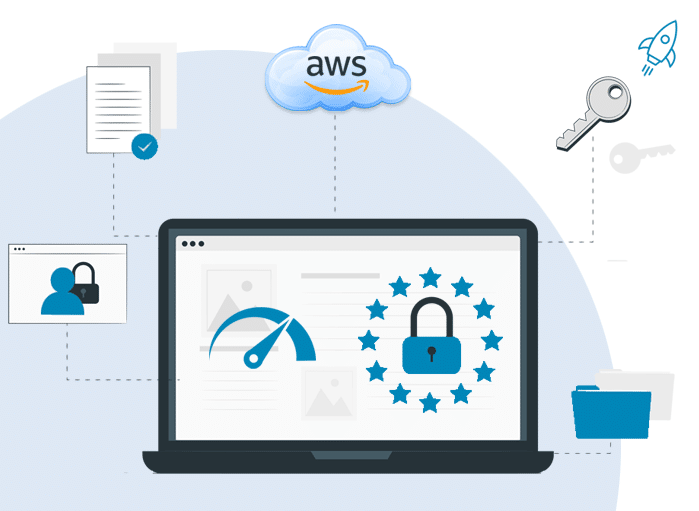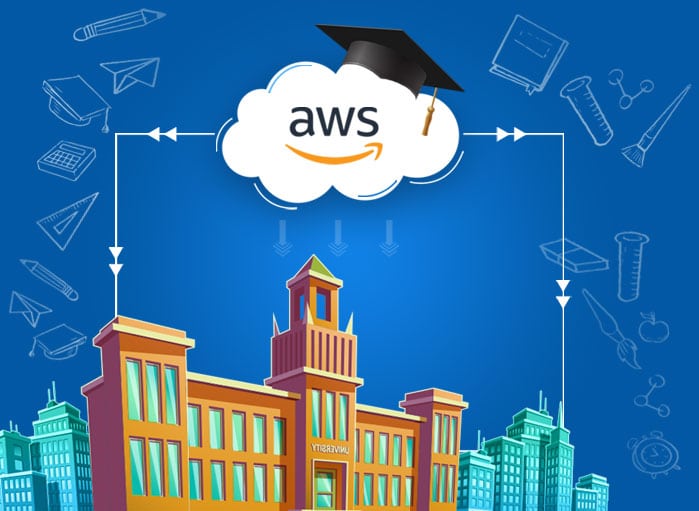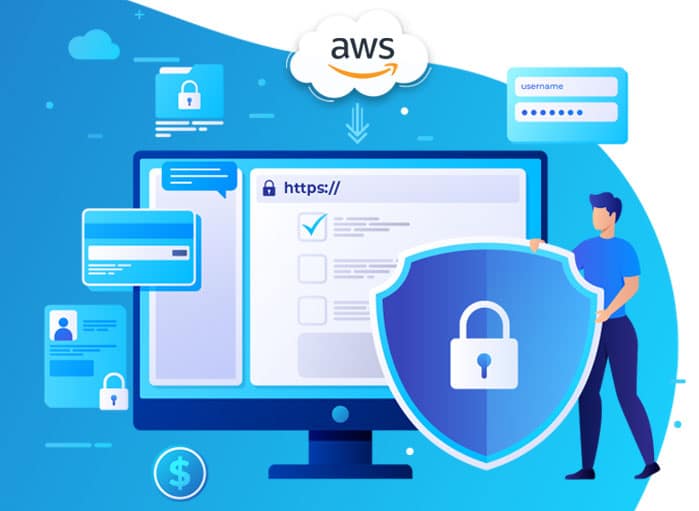
AWS Security Practices: Your Guide to a Secure Cloud Environment
Tags: AWS,Updates


AWS security is a critical aspect of navigating the digital landscape. Amazon Web Services (AWS), the most comprehensive and widely used cloud platform globally, offers over 200 fully featured services, subsequently powering countless businesses and driving innovation across sectors.
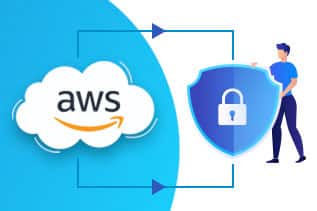
Importance of Security in Cloud Computing
In the digital realm, as cyber threats are on the rise, the security of your cloud infrastructure is non-negotiable.
Interestingly, as we increasingly rely on the cloud, ensuring data safety becomes a critical concern. Moreover, cloud security isn’t just about protecting data; rather, it’s about establishing trust, adhering to compliance standards, and fostering business growth.
Let’s envision a scenario where you wake up to the news of a data breach in your company, leading to financial losses and a tarnished reputation. So, to avoid such a nightmare, you need to implement some of the best practices for AWS security.
The best AWS security practices in place will enable you to strengthen your digital fortress against cyber threats.
This blog post aims to guide you through the complex world of AWS security.
AWS Security Practices
So, buckle up and get ready to dive into the realm of AWS security best practices and strengthen your cloud environment.
Understanding the AWS Shared Responsibility Model
In fact, in the world of cloud computing, understanding the AWS Shared Responsibility Model is akin to understanding the rules of the road before you start driving. As a matter of fact, it’s a fundamental concept that outlines who is responsible for what in the realm of AWS security.
Furthermore, the AWS Shared Responsibility Model defines the security responsibilities between AWS and the customer in the cloud environment. Therefore, it clarifies who is accountable for various aspects of security to ensure a secure and compliant cloud environment.
Security “of” the Cloud
Security “of” the cloud refers to the security measures that AWS is responsible for. Well, AWS is responsible for securing the infrastructure that supports AWS Cloud services. This includes hardware, software, networking, and facilities.
Security “in” the Cloud
On the other hand, security “in” the cloud is the responsibility of the customer. Customers are responsible for managing the security of their data and resources within the AWS Cloud. This includes tasks such as managing guest operating systems, updating software, and configuring security groups.
Understanding this model is crucial for any business looking to secure its operations on AWS. It helps businesses implement proper security measures and create a secure and compliant cloud environment.
Implementing Robust Identity and Access Management (IAM)
Additionally, IAM is like a gatekeeper for your AWS environment, deciding who gets access and monitoring their activities. Without Identity and Access Management, your AWS environment is vulnerable, like leaving your house with open doors. Moreover, IAM ensures security by allowing only authorized individuals to access your resources.
Best Practices for IAM Roles and Permissions
It’s not just about having IAM; it’s about using it effectively. Generally, follow the principle of least privilege, giving users only the necessary access for their job. Furthermore, regularly review and update permissions, like managing keys for your house, to ensure proper access and reduce risks.
Use of Multi-Factor Authentication (MFA)
Basically, MFA adds an extra layer of security, like a deadbolt on your front door. Even if someone bypasses a password, MFA requires a unique code on a trusted device. As a result, enabling MFA strengthens AWS security significantly.
Securing your AWS Account
Securing your AWS account is like locking your treasure chest. Indeed, it’s about safeguarding your precious resources and keeping them out of the wrong hands. Therefore, let’s dive into how you can do this effectively.
Regular Audits of AWS Resources
Regularly review and audit your AWS resources to track, identify, and address potential security risks.
Use of AWS Trusted Advisor for Security Checks
Besides, leverage AWS Trusted Advisor as your security consultant for real-time guidance on best practices, cost reduction, performance enhancement, and security improvements.
Importance of Limiting AWS Root Account Usage
Ultimately, minimize the use of the AWS root account, which has complete access, by creating and utilizing IAM users with appropriate permissions for day-to-day tasks.
Importantly, it’s crucial to stay vigilant in implementing these practices to maintain a secure AWS environment.
Data Protection
When it comes to your AWS environment, data protection is like a secret sauce. Notably, it’s what keeps your data safe and secure, even in the face of potential threats.
Encryption at Rest and in Transit
Firstly, let’s discuss encryption, both at rest and in transit. Particularly, encryption at rest secures data even when it’s not actively being transmitted. Alternatively, encryption in transit protects data while it’s being transferred. As a result, AWS offers robust methods and services to encrypt data at rest and in transit, ensuring continuous protection.
Use of AWS Key Management Service (KMS)
Next up is the AWS Key Management Service (KMS). It simplifies the management of encryption keys. Generally, it simplifies the management of encryption keys. In conclusion, it provides a secure and managed environment for creating and controlling encryption keys, ensuring their confidentiality and accessibility only to authorized users.
Backup Data using AWS Backup
Additionally, backing up data using AWS Backup is essential for data protection and quick recovery in case of any issues. Particularly, AWS Backup is a fully managed service that centralizes and automates data backups across AWS services. Basically, it acts as an automatic safety net maker, ensuring your data is securely backed up and ready for recovery when needed.
Hence, prioritizing data backup is a key component of maintaining a secure and resilient AWS environment.
Network Security
Essentially, Network security in AWS is like the moat around your castle, keeping unwanted visitors at bay. Let’s explore how you can build and maintain this moat effectively.
Security Groups and Network Access Control Lists (NACLs)
Primarily, Security Groups and NACLs act as virtual guards and gatekeepers, controlling access to your AWS environment. Specifically, Security Groups manage traffic at the instance level, while NACLs manage traffic at the subnet level.
Use of AWS Shield for DDoS Protection
Most importantly, AWS Shield provides managed DDoS protection, acting as a specialized force to defend against DDoS attacks on your AWS applications.
Importance of Virtual Private Cloud (VPC) Flow Logs for Network Monitoring
Finally, check the importance of VPC Flow Logs for network monitoring. Basically, VPC Flow Logs serve as vigilant scouts, monitoring and capturing information about network traffic in your VPC. So, they help identify unusual patterns and investigate suspicious activities.
Incident Response
Indeed, incident response is like having a plan for when the castle is under attack. Therefore, it’s about being ready to respond quickly and effectively.
Importance of a Well-Defined Incident Response Plan
Having an incident response plan is crucial for effectively dealing with security breaches. In fact, it outlines the necessary steps, assigns responsibilities, and manages communication during an incident.
Use of AWS CloudTrail for Logging and Monitoring
In the same way, AWS CloudTrail acts as a diligent recorder, capturing all API calls and changes in your AWS environment. As a result, it provides valuable logs for detecting suspicious activities and responding to incidents.
AWS Services for Incident Response
Finally, let’s talk about AWS services for incident response, like Amazon GuardDuty and AWS Security Hub.
Well, Amazon GuardDuty and AWS Security Hub serve as trusted advisors, helping you detect and respond to threats.
Namely, GuardDuty detects potential threats, while Security Hub provides a comprehensive view of security alerts and overall security status across your AWS accounts.
Consequently, leveraging AWS services contribute to a robust incident response strategy and help safeguard your AWS environment effectively.
Compliance and Audit
Significantly, compliance and audit play vital roles in ensuring the security and integrity of your AWS environment.
AWS Compliance Programs
For instance, AWS participates in various compliance programs, adhering to global regulations and standards like GDPR, HIPAA, and ISO 27001. By using AWS services, you benefit from AWS’ robust policies and processes designed to meet the needs of security-sensitive organizations.
Use of AWS Artifact for Access to Compliance Reports
Not to forget, AWS Artifact provides instant access to AWS’ security and compliance reports. It serves as a portal where you can find reports such as SOC, PCI, and certifications from accredited bodies across different compliance verticals and geographic regions.
By leveraging AWS Compliance Programs and utilizing AWS Artifact, you can meet regulatory requirements and gain the trust of clients or customers.
Case Studies for AWS Security
Here are two case studies that demonstrate the implementation of AWS security best practices:
ZS Associates on Implementing AWS Security Practices
Interestingly, ZS Associates, a global consulting powerhouse, had to make their client data as secure as Fort Knox. Their pick? AWS. Thanks to AWS’s Identity and Access Management (IAM), they could lock down access to their services. But they didn’t stop there.
Also, they used AWS’s Multi-Factor Authentication (MFA) to add an extra layer of security. It’s like having a vault inside a vault! And for their Amazon Elastic Compute Cloud (EC2) instances? They put up a virtual firewall with AWS’s Security Groups.
By implementing these security best practices, ZS Associates ensured the security of their client data and protected their resources from potential threats. Learn how they achieved this on AWS.
8 Securities on Implementing AWS Security Practices
On the other hand, 8 Securities a fintech gem from Hong Kong, needed a platform that was not just secure but also robust, flexible, and fair-priced. Guess who they turned to? Yup, AWS. They powered their portal, website, and business tools using Amazon EC2 Windows instances.
They also played smart with Elastic IP Addresses to manage domain names and instances. For data storage, Amazon EBS was their go-to, and Amazon VPC had their back for their production network.
By implementing these AWS services, 8 Securities was able to strengthen its security posture and enhance its productivity. Discover how 8 Securities leveraged AWS to their advantage.
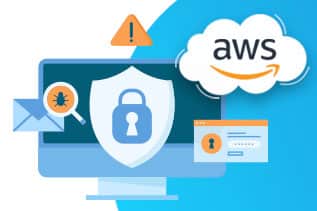
Navigating the AWS Security Maze
The realm of AWS security can seem like a labyrinth, especially when you’re dealing with challenges like expertise gaps, misconfigurations, and compliance complexities. However, the task of managing access to sensitive data can be daunting. But don’t worry!
At eWay Corp, as an AWS partner, we’re here to guide you through these hurdles and help you become a security pro. Just give our team a call and we will be more than happy to guide you with the best practices for your store.
Final Thoughts
In conclusion, implementing AWS security best practices is like constructing a castle, complete with guards, a moat, and an alarm system. The goal is to protect your precious resources and data from potential threats.
To summarize, in today’s digital landscape, ensuring robust AWS security is not just an option—it’s a necessity. By implementing these best practices, you can significantly enhance the security of your AWS environment, protect your valuable data, and most importantly maintain the trust of your customers.
Remember, AWS security is a continuous journey. So, stay vigilant, stay updated, and most importantly, stay secure!

